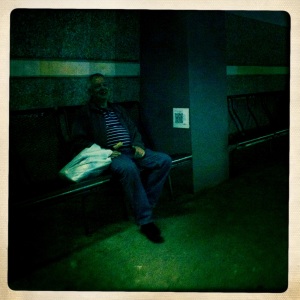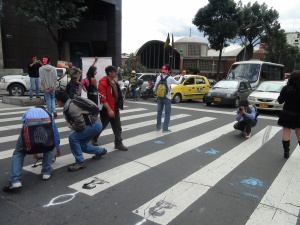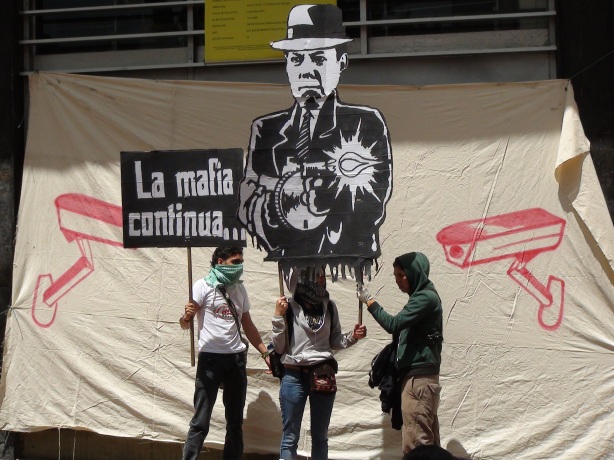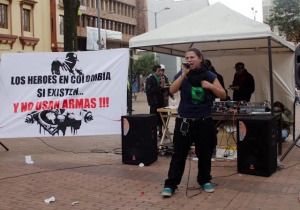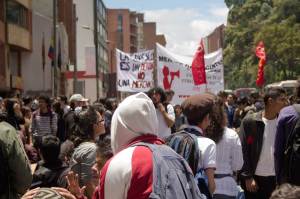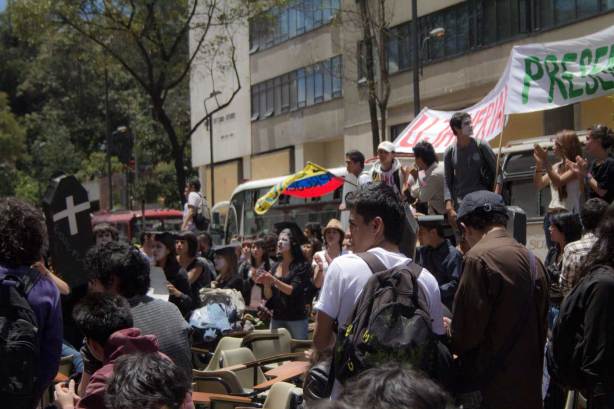While we justified our trip to Brazil as attending a conference, I will now openly admit that it was actually a festival. After three days of listening to all kinds of interesting projects and networking opportunities, I felt like my head was flowing over with information and new inspiration to take home again.
 To give you readers some context: Festival Cultura Digital is an International encounter where different people, projects and groups present themselves in order to strengthen an international network of people working in the field. Three days full of experiences exchanges, workshops and keynote speakers such as Yochai Benkler, Michel Bauens, and Paolo Coelho amongst othersall treating the workings of the web, independent media, hacking and so much more. We were there, now known as ‘map:m()b’ to talk about mapping stories and community journalism.
To give you readers some context: Festival Cultura Digital is an International encounter where different people, projects and groups present themselves in order to strengthen an international network of people working in the field. Three days full of experiences exchanges, workshops and keynote speakers such as Yochai Benkler, Michel Bauens, and Paolo Coelho amongst othersall treating the workings of the web, independent media, hacking and so much more. We were there, now known as ‘map:m()b’ to talk about mapping stories and community journalism.
We were scheduled only on the third day of the festival and therefore had the rest of the days to watch and learn from the other projects. Many interesting ideas passing the agenda. The festival hosted such an great amount of projects and initiatives that it was impossible for us to attend them all, however I do want to give you an impression of some projects to expect there.
Waste2No.
Waste2No project explores how the Internet of Things (IOT) can be integrated with Urban and domestic environments in order to enhance sustainability. In this stage, the project aims to create a website that allows people to share, sell and trade.
Waste2No plays in to the community feeling, of sharing things with people in your environment. It is an app where you can point out the things you can miss by scanning them and putting them in the object cloud. Consequently, people in your close vicinity do the same and when you need something you can look up through the app if people around you might be able to lend it to you. I liked this project very much having in mind the enormous amount of waste people produce. From my own obsession with recycling, I could only cheer for this project as not only do we prevent ourselves from buying everything, it will also increase the connections within a neighbourhood.
Chokepoint
This project aims to map ‘owners’ on the internet. Where are the control nodes of the service used by thousands of global citizens.
An Amsterdam based project that gives workshops on how the internet works. They for example teach children on how the network functions and ask critical questions such as:”Is the internet only turned off in a little circle, or in the whole country?” If there is still connectivity you can use that still to communicate. An important asset as we are ever more exposed to the Internet and more dependent of technology. Asking critical questions can’t start early enough and is done way too little!
As I mentioned earlier, there were many many more projects but I will keep the amount to be discussed here limited.
The second day was important for us as we would meet up with several people from the cartography group. As the schedule of Cultura Digital was quite chaotic despite the strict time schedules, we noticed that many of our ‘colleagues’ were as lost as we were. Eventually we decided to make our own network meetup and had a long and useful talk with Breno and Mariana, two members of a group called Mapas de Vista, an app in order to map on CMS systems such as Drupal and WordPress. After a short presentation of Leo, the more technical expert behind the system he got us convinced and in only a few mouse clicks, we destroyed our whole website. Obviously, as it was supposed to be a simple operation, it always turns out be not so simple in the end. Luckily, we were in the presence of the right people and were able to install the website the right way eventually. Even though not nearly finished yet, please feel free to have a peek at our new website: http://mapmob.org.
After that, all participants were invited to have a look in IPE, at Morro da Conceiçao, a digital culture space with a political notion. After a tour in a beautiful part of Rio, we were treated with a performance by a theater group treating gender topics amongst others.
The final day then, we were scheduled for a presentation that got completely on the background of all the interesting things to do. We spend the whole morning editing but managed to complete it at the due time. Unfortunately our attempt to upload it ended up a little buggy, but we’ll try soon again. Ellen prepared a last minute Portuguese presentation informing about our project Dreammachine.
And as we haven’t been updating you much lately, this is shortly what it’s about:
Our aim is to visualize dreams of youngsters in order to make them think out of the box. Not only do we believe dreaming is great and necessary to get yourself inspired to achieve things, at the same time we want to challenge them to use new techniques such as video and photo editing. Our experiences so far, in the Netherlands are that many of the kids still remain dreaming in terms of work and that only few talk about becoming happy. As well money seemed to be an important issue for many of the kids (often from Moroccan and Turkish descent).
 The gran finale of Festival Cultura Digital was the arrival of old minister of Culture Gilberto Gil. Although I often don’t feel much for ‘the famous’ I caught myself laughing sheepishly as mister Gil patted me friendly on the back. A proud feeling of our first festival as map:m()b duo.
The gran finale of Festival Cultura Digital was the arrival of old minister of Culture Gilberto Gil. Although I often don’t feel much for ‘the famous’ I caught myself laughing sheepishly as mister Gil patted me friendly on the back. A proud feeling of our first festival as map:m()b duo.





